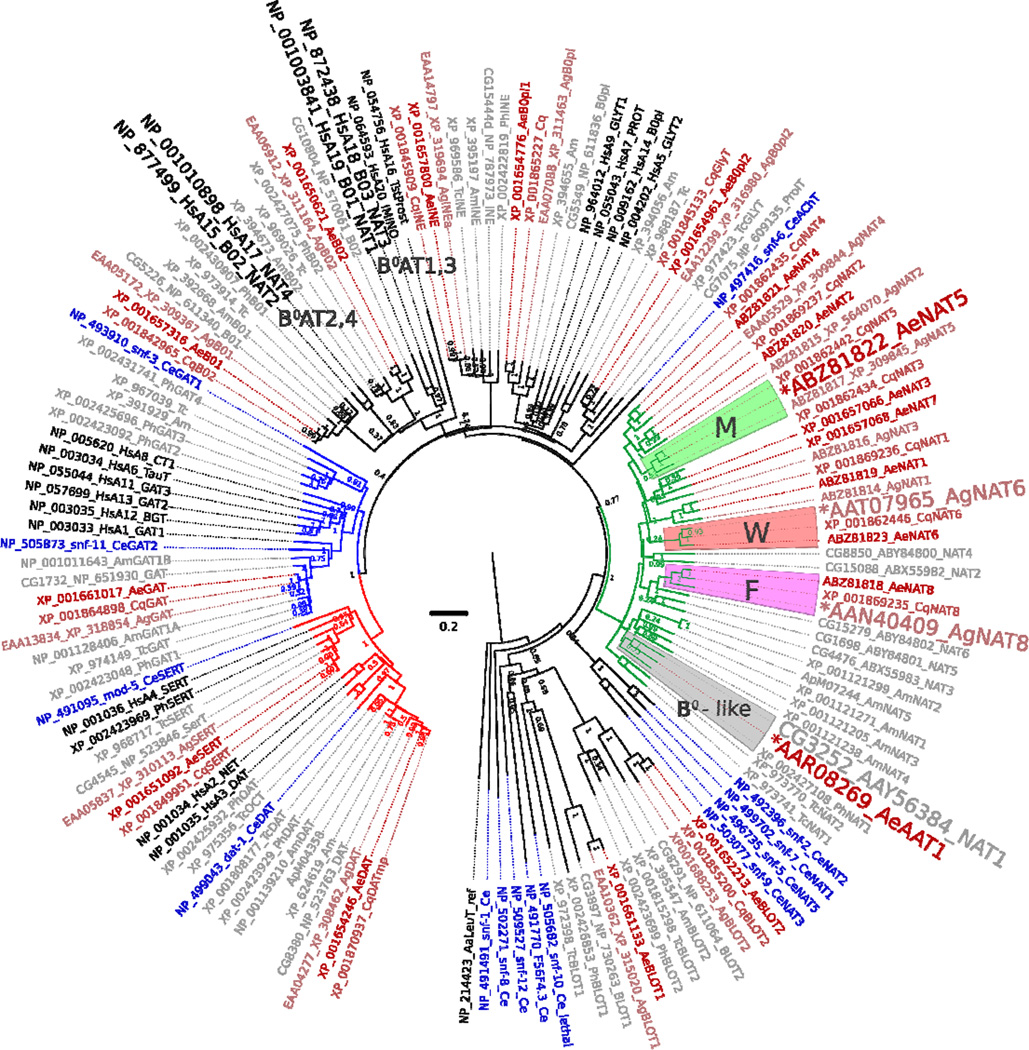Figure 2. Phylogenetic position of AeNAT5 relative to M, F, W and B0-like system NATs.
The consensus phylogenetic tree, inferred by the Neighbor-Joining method (Saitou and Nei, 1987), is taken to represent the evolutionary hierarchy of the SLC6 family members from genomes of selected organisms. The normalized bootstrap values from 2000 replicates (Felsenstein, 1985) are shown next to the branches. Branch lengths render relative evolutionary distances computed by the JTT matrix-based method (Jones et al., 1992). Scale bar reveals number of amino acid substitutions per site. The rate variation among sites was modeled with a gamma distribution (shape parameter = 1). The analysis involved 145 amino acid sequences representing all SLC6 transporters of 8 selected model organisms. Accession numbers and unique names of the transporters are shown as branch projections. The tree was built using MEGA 5 (Tamura et al., 2011), rendered with FigTree 1.4.0 software (tree.bio.ed.ac.uk), and visualized with Inkscape 0.48. Groups of representative transport systems are marked by background colors and capital letters. A larger font indicates characterized NATs. The green branch is the subfamily of insect-specific NAT-SLC6. Blue and red branches render the subfamilies of GABA and monoamine neurotransmitter transporters, respectively. Transporters from different organisms are depicted by different colors and unique two letters identifiers integrated in to the accession-name strings: blue, nematode Caenorhabditis elegans (Ce), black, Homo sapiens (Hs); red gradation, Aedes aegypti (Ae), Anopheles gambiae (Ag), and Culex quinquefasciatus (Cq) mosquitoes; gray, selected model insects including fly Drosophila melanogaster (CG prefix in the gene accession #), bee Apis mellifera (Am), beetle Tribolium castaneum (Tc), and louse Pediculus humanus corporis (Ph).

